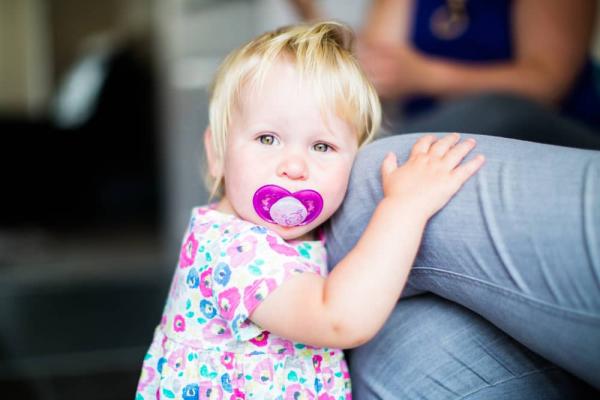
There is no getting around it - kids are messy. I don't think I truly understood what "messy" meant until we brought a baby into our home. From newborn diapers and baby spit-up to mud-filled toddler shoes, parenting is a dirty job.
But do you know how many germs your little ones are exposed to every day? A study revealed a surprising analysis of the germiest objects kids aged newborn to four years old come in contact with every day.
And the winners for the germiest kid's items are..
1. Stroller
You push your stroller across city streets, into public bathrooms and through amusement parks. When the filthy trek is complete, you store it in a car trunk or garage - hot, enclosed spaces that provide perfect conditions for germs to multiply.
Worst germ found
Streptococcus, which can cause illnesses like strep throat, pink eye and meningitis.
How to clean
Turn the stroller on its side and give it a good shake to dump the crumbs. Then, use soap and hot water to clean the fabric seating area, canopy and storage basket. Use a mild sanitizing spray and damp cloth to wipe down the stroller's handles, cup holder and food tray. You can also wipe it down with antibacterial wipes once or twice a month for optimal sanitation.
2. Pacifier
Pacifiers are a parent's best friend and their worst nightmare. Though the sucking is a huge relief for babies and a comfort to some toddlers, pacifiers quickly attract germs from being dropped on the floor, shoved in diaper bags and passed between hands several times a day.
Worst germ found
E. coli, which can cause diarrhea, urinary tract infections and respiratory illness.
How to clean
Rinse off the pacifier or wash it with soap and water after it touches an unclean surface. Every few days, run it through a dishwasher cycle on the top rack or place it in a pot of boiling water for five minutes.
3. Plush toy
Toys get dragged across grocery store floors, left in the bathroom and covered in boogers and spit-up often. The fur of a soft toy absorbs any liquid and germs it comes in contact with, making stuffed animals some of the most difficult toys to properly clean.
Worst germ found
Moraxella, which can cause sinusitis, ear infections and pneumonia. It is also part of a group of bacteria that can become resistant to antibiotics.
How to clean
Throw the stuffed animal in a laundry machine on a hot water cycle. Put the stuffed animal in a white pillowcase before washing to prevent matting or losing the fur. Be conservative with the soap and don't use fabric softeners. Afterwards, air dry in the sun or fluff dry in the dryer to prevent the animal from losing its shape.
So, which age group is the germiest?
Kids aged three to four came into contact with the most germs out of the three age groups who participated in this study. Ages one to three came in second and babies ages newborn to one were the least germy bunch.
What now?
Before you freak out and start disinfecting everything, keep in mind that chemical household disinfectants are hazardous to human health and the environment, and the overuse of antibacterial products is leading to the spread of "superbugs," which are resistant to antibiotics.
This doesn't mean you should throw out antibacterial wipes, either. Instead, use them sparingly and strategically and avoid using them on items your child puts in their mouth. Look for eco-friendly disinfectants approved by the Environmental Protection Agency that include less harmful bleach alternatives for sanitizing your child's items.
Health experts recommend cleaning toys once a month as a general rule, then more often in these situations:
-
If your child or their playmates have been sick
-
If other children are putting your child's toys in their mouths
-
If a child has gotten food, milk, vomit or mucus on a toy
As a parent of a preschooler, this study was a good reminder to make a regular cleaning schedule for my son's toys and commonly used items, and wipe down items that I hadn't thought about washing before.
While it's impossible to completely avoid germs, especially since there are some beneficial bacteria out there too, being aware of where and what you should regularly clean and sanitize can help keep you and your children safe and healthy.

